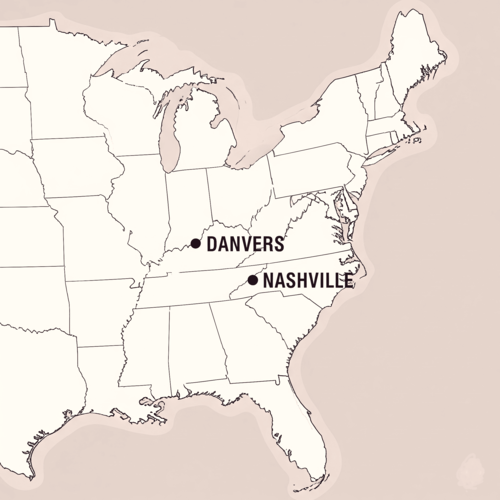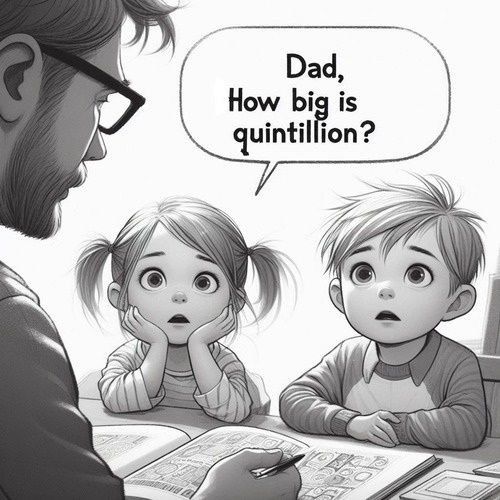Matthew 12:39-40: What Did Jesus Mean by the Sign of Jonah?
The Sign of Jonah: When religious leaders demanded a miraculous sign from Jesus, His response was both profound and perplexing. Rather than performing an immediate wonder, He pointed to “the sign of Jonah”—a prophetic parallel that would find its fulfillment in His death and resurrection. But what exactly did Jesus mean by this mysterious reference?
“An evil and adulterous generation seeks for a sign, but no sign will be given to it except the sign of the prophet Jonah. For just as Jonah was three days and three nights in the belly of the great fish, so will the Son of Man be three days and three nights in the heart of the earth.” (Matthew 12:39-40)
Historical Context
The religious leaders’ demand for a sign wasn’t unusual in first-century Judaism. Signs validated a prophet’s ministry and authenticated divine messages. However, Jesus had already performed numerous miracles, making their request more a reflection of hardened hearts than genuine seeking. The reference to Jonah carried particular weight because every Jewish listener would have known the story of this reluctant prophet who spent three days in a fish’s belly before preaching to Nineveh.
The Three Key Elements of the Sign
The sign of Jonah operates on multiple levels, each revealing deeper theological truth:
- The temporal pattern—three days and three nights: This wasn’t meant as a precise 72-hour calculation but reflected the Jewish understanding of time, where any part of a day could be counted as a whole. This pattern would be fulfilled in Christ’s own death and resurrection.
- Divine sovereignty at work: Just as God orchestrated Jonah’s experience—from the storm to the fish to his deliverance—so too would He sovereignly accomplish His purposes through Christ’s death and resurrection. Nothing about these events was accidental or outside God’s control.
- The Gentile response on display: Nineveh’s repentance at Jonah’s preaching stood as a prophetic pattern pointing to how the nations would respond to Christ’s greater message. This aspect carried an implicit judgment against those who witnessed greater things yet remained unbelieving.
Christ as Greater than Jonah
Jesus’s reference to Jonah wasn’t merely about drawing parallels—it was about showing His own superiority. Where Jonah fled from God’s call, Christ perfectly fulfilled the Father’s will. Where Jonah reluctantly preached to one city, Christ commissioned His church to all nations. Where Jonah’s experience with death was figurative, Christ’s would be literal – and His victory complete.
The sign of Jonah reaches its climax in Christ’s resurrection. While Jonah emerged from the fish to preach repentance, Christ rose from the dead as the firstfruits of a new creation. His resurrection validates His message, authenticates His ministry, and guarantees the future resurrection of all who believe in Him.
Contemporary Application
This sign speaks powerfully to modern believers in a myriad ways:
- It warns against sign-seeking that springs from unbelief rather than faith. The resurrection of Christ stands as the ultimate sign—sufficient evidence for belief. When we demand additional signs, we risk following the pattern of those who rejected Christ despite His miracles.
- It reminds us of God’s sovereign power to bring life from death. Just as God preserved Jonah and raised Christ, He can work in seemingly impossible situations today. The sign of Jonah testifies to God’s unfailing ability to accomplish His purposes, even through what appears to be defeat.
- It calls us to self-examination. The Ninevites repented at Jonah’s preaching, yet we have a greater message and a greater Messenger. How much more should we respond with faith and obedience to the gospel of Christ?
Living in Light of the Sign
The sign of Jonah continues to challenge and encourage believers today. It challenges us to trust in God’s sovereign purposes, even in dark times. It encourages us with the certainty of Christ’s resurrection and the promise of our own. And it compels us to share this message with others, knowing that just as Nineveh responded to Jonah’s preaching, people today can still be transformed by the gospel of Christ.
The sign points us ultimately to Christ Himself—to His death that atoned for our sins and His resurrection that secured our justification. In Him, we have something far greater than any miraculous sign: we have the very Son of God who died and rose again, offering salvation to all who believe. As we contemplate the sign of Jonah, may we respond not with demands for additional signs but with faith in the One who is Himself the greatest sign—Jesus Christ Himself, crucified and risen, the Hope of all nations.
The Sign of Jonah—Related FAQs
Why did Jesus call that generation “evil and adulterous”? Jesus used this strong language not merely to describe moral failings, but to highlight spiritual infidelity—they were breaking their covenant relationship with God by demanding signs while rejecting clear revelation. Just as adultery violates the marriage covenant, their sign-seeking demonstrated their faithless hearts despite having God’s promises and Christ’s presence among them.
Did Jonah actually die inside the fish? While Scripture doesn’t explicitly state whether Jonah died, the text presents his experience as a living descent into darkness that powerfully foreshadowed Christ’s death. The emphasis lies not on Jonah’s physical state but on God’s sovereign power to deliver from a death-like situation, making the parallel with Christ’s actual death and resurrection even more striking.
How does the Sign of Jonah relate to evangelism today? The Sign of Jonah reminds us true conversion doesn’t depend on spectacular displays of power but on the proclaimed message of Christ’s death and resurrection. Just as Nineveh repented through the simple preaching of Jonah, God’s sovereign grace works through the foolishness of gospel preaching to bring sinners to repentance.
Why didn’t Jesus just perform a sign when asked? Jesus’ refusal to perform a sign on demand demonstrated that faith precedes sight, not the other way around. His response exposed the corrupt hearts of those who’d already witnessed numerous miracles yet still demanded more evidence, showing that unbelief stems from a heart problem rather than a lack of proof.
Does the Sign of Jonah have any connection to baptism? The Sign of Jonah profoundly connects to baptism as both point to death and resurrection—our spiritual reality in Christ. Just as Jonah emerged from the depths and Christ rose from the grave, baptism pictures our death to sin and resurrection to new life in Christ, marking our participation in Christ’s death and resurrection.
What’s the significance of Nineveh being a Gentile city? Nineveh’s repentance served as a prophetic picture of God’s purpose to bring salvation to the Gentiles through Christ. Their response to Jonah’s preaching demonstrated that God’s saving purposes extended beyond Israel’s borders and foreshadowed the global scope of Christ’s kingdom.
How does the Sign of Jonah address modern scepticism about miracles? The Sign of Jonah confronts scepticism by grounding faith in the historical reality of Christ’s resurrection rather than in continuous miraculous displays. It teaches that God has provided sufficient testimony to His truth in Christ’s death and resurrection, making additional signs unnecessary for genuine faith.
The Sign of Jonah—Our Related Posts
Editor's Pick

If Jesus is Messiah, Why Aren’t ALL Messianic Prophecies Fulfilled?
If Jesus is truly the Messiah, why hasn't world peace arrived? Why do Jews still face persecution? Why isn't the [...]

When Courage Fails: Will I Be Forgiven If I Deny Christ in Persecution?
The rooster crowed, and Peter remembered. In that devastating moment, the apostle realised he’d just done the unthinkable—three times he’d [...]

What Makes a Godly Dad? 5 Biblical Principles Fathers Need
Modern culture sends fathers mixed messages. Be strong but sensitive. Be involved but not overbearing. Lead but don’t dominate. With [...]

What Makes a Godly Mom? A Scripture-Backed Guide
In our culture’s confusion about gender roles and parenting, the timeless question remains: what makes a godly mother? While secular [...]

Paul’s Mandate for Men: Headship Or Servant Leadership? Or Both?
Modern Christianity has fallen into a trap. We've created an either/or battle between "headship" and "servant leadership," as if these [...]

Should We Stop Using Male Pronouns for God? Why Do We Say No?
A friend of ours arrived eagerly at his first theology class in seminary. But he quickly discovered something troubling: the [...]

Did Old Testament Law Force Women to Marry their Rapists?
**Editor’s Note: This post is part of our series, ‘Satan’s Lies: Common Deceptions in the Church Today’… Viral misinformation abounds [...]

From Danvers To Nashville: Two Statements, One Biblical Vision
30 years separate the Danvers Statement on Biblical Manhood and Womanhood (1987) and the Nashville Statement on Human Sexuality (2017). [...]

The Nashville Statement: Why Affirm It Despite Media Backlash?
WHY DO REFORMED CHRISTIANS STAND BY THIS STATEMENT ON MARRIAGE AND GENDER? When the Nashville Statement was released in 2017, [...]

Who Is Belial? Solving The 2 Corinthians 6:15 Mystery
Belial: This name from the pages of Scripture chills the soul. Who is this mysterious figure Paul invokes in 2 [...]
SUPPORT US:
Feel the Holy Spirit's gentle nudge to partner with us?
Donate Online:
Account Name: TRUTHS TO DIE FOR FOUNDATION
Account Number: 10243565459
Bank IFSC: IDFB0043391
Bank Name: IDFC FIRST BANK






